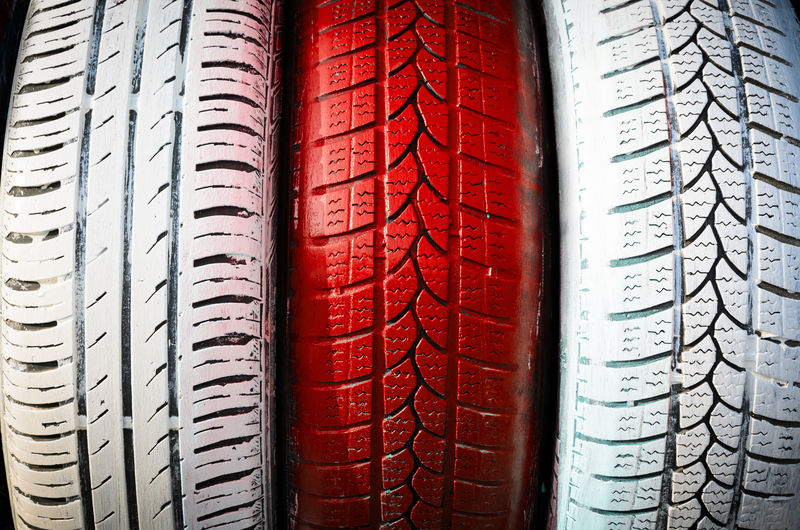Effortless Waste Management with Rubbish Removal Bags as an Alternative to Skips
In the age of rapid urbanization and accelerating consumerism, efficient waste disposal is no longer an afterthought. Homeowners, businesses, and tradespeople alike seek solutions that are hassle-free, effective, and sustainable. Enter rubbish removal bags – a modern alternative to traditional skip bins that is revolutionizing how we handle unwanted materials and clutter. This comprehensive guide will explore rubbish removal bags for effortless waste management, their advantages over skips, and tips for their effective use.

Why Rubbish Removal Bags are Gaining Popularity as Skip Alternatives
Rubbish removal bags (sometimes called waste removal sacks or waste bags) are large, durable, and versatile bags specifically designed to contain various types of waste. Unlike heavy and cumbersome skips, these flexible alternatives offer users exceptional convenience and flexibility, making them the go-to choice for household clearances, garden projects, renovations, and even commercial cleanouts.
- Cost-effective: Waste removal bags are typically cheaper than traditional skip hire, saving users money on rental and permit fees.
- Space-saving: Their compact and foldable design makes them ideal for properties with limited space.
- Flexible collection: With many providers, you only pay for collection when the bag is full, ensuring you never overspend.
- Wide range of capacities: From small sack-sized bags to jumbo units, there’s a rubbish removal bag for every project, big or small.
- Minimal permits required: In most cases, placing these bags on private property requires no special permit, unlike skips parked on public streets.
What Exactly Are Rubbish Removal Bags?
Rubbish bags designed for waste management are robust sacks, usually made of woven polypropylene. Their sturdy construction allows them to hold large quantities of waste without tearing or collapsing. These waste removal sacks can be purchased from hardware stores, online retailers, or directly from waste removal companies. Once filled, the provider arranges a collection, and the entire bag--with contents--is safely loaded and disposed of, often with a focus on recycling and responsible management.
Comparing Rubbish Removal Bags to Traditional Skips
The classic skip bin appears on driveways and streets during renovations and large clear-outs, but they may not always be the best solution. Let’s examine how using rubbish bags as an alternative to skips can transform your waste management process.
1. Convenience and Storage
Skips are bulky, heavy, and immovable after placement. In contrast, rubbish removal sacks are delivered flat-packed, requiring negligible storage space. You can store several within a shed, car boot, or even a kitchen cupboard until needed.
2. Ease of Use
Setting up a rubbish bag takes mere seconds--simply unfold and place it where necessary. When compared to maneuvering a skip (often requiring a crane or truck), the ease of handling is a clear advantage.
3. Accessibility
Skip bins need level ground and driveway or roadside space--this isn’t always possible in busy urban homes, flats, or commercial areas. Rubbish sacks fit tight spaces, backyards, or hard-to-reach corners, making them supremely versatile.
4. Permit and Compliance
Placing a skip on public land often involves permits, insurance, and compliance with local regulations--adding cost and hassle. Most rubbish removal bags, placed on your property, avoid these burdens, streamlining the entire process.
5. Flexibility of Collection
Skips are usually hired for a fixed period--once that time elapses, collection is mandatory even if the skip isn’t full. With rubbish bags, arrange collection only when you’re ready. If your project expands, simply add another bag!
6. Environmental Responsibility
Many waste bag providers offer clear recycling guarantees. Segregated waste can be collected, with a greater percentage going to recycling than traditional mixed skip loads, helping reduce landfill use.
7. Overall Cost
With no heavy lifting equipment, minimal permit requirements, and pay-on-collection pricing models, rubbish removal bags often undercut skips in terms of cost, especially for small-to-medium waste loads.
Types of Rubbish Suitable for Removal Bags
What can you put in a rubbish removal bag? Their adaptability is a key part of their appeal. While specific restrictions may vary by provider, most commonly accepted materials include:
- Household waste: Old clothing, furniture, toys, books, and general clutter.
- Garden waste: Grass cuttings, branches, weeds, leaves (but not soil in all cases).
- Renovation debris: Tiles, plasterboard, wood, non-electrical fittings, and fixtures.
- Office clear-outs: Paper, cardboard, non-confidential documents, and desks.
- Appliances: Many providers accept small appliances, though large white goods may need special arrangement.
Prohibited materials usually include:
- Hazardous waste (chemicals, asbestos)
- Batteries and electronics (WEEE)
- Liquids and paint tins
- Medical waste and sharps
- Large quantities of soil or rubble (check with provider)
How to Use Rubbish Removal Bags for Effortless Waste Management
1. Select the Right Size Bag
Bags are available in various sizes to suit your needs. The most common are:
- Small bags: Ideal for minor clear-outs (holds up to 1 cubic yard)
- Medium bags: Suited for kitchen or bathroom renovations (up to 1.5 cubic yards)
- Large or jumbo bags: Perfect for large furniture, garden waste, or bulky items (up to 4.5 cubic yards or more!)
2. Place and Fill the Bag
Set the bag on a flat surface that allows easy collection access (avoid locations beneath low-hanging wires or trees). Open the bag and begin filling, keeping heavier items at the bottom. Do not overfill; bags have marked fill lines and weight limits (often up to 1500kg for the strongest types).
3. Arrange for Collection
Contact your provider when ready, quoting your unique bag reference code if applicable. Collections are often scheduled within 1-3 working days, though some offer next-day or even same-day pickup.
4. Responsible Disposal
The provider will safely remove the bag using specialized equipment, minimizing damage to driveways or gardens. Many companies sort and recycle the waste, diverting as much as possible from landfill.
Environmental Benefits of Using Rubbish Removal Bags
Choosing a bag-based waste disposal method often has a lower carbon footprint than hiring a skip. Here’s why:
- Fewer truck journeys: Flat-packed bags are delivered in bulk, reducing emissions compared to multiple skip lorry trips.
- Greater recycling rates: Segregation at collection sites means more material is directed to proper recycling facilities.
- Reduced illegal dumping: With fewer permits and obstacles, homeowners are less likely to resort to fly-tipping or irresponsible disposal.
By supporting responsible waste management with rubbish removal bags, users contribute to cleaner, greener communities.
Choosing the Best Rubbish Removal Bag Provider
With the rise of effortless waste management services, the market is flush with options. Here’s what to consider before you buy:
- Reputation: Read independent reviews or seek recommendations to ensure reliability and prompt collection.
- Pricing: Compare not just the sticker price, but also delivery, collection, and recycling fees.
- Accepted materials: Check the provider’s list of accepted and prohibited items before purchase.
- Environmental commitment: Seek out companies that prioritize recycling and eco-friendly practices.
- Service area: Some companies only collect from certain regions, so verify coverage before ordering.
Practical Tips for Using Rubbish Removal Bags
- Plan ahead: Estimate your waste volume as accurately as possible – it’s better to slightly oversize your bag than require a second order.
- Don’t delay collection: Overfilled bags may be refused, or become unsafe in high winds. Arrange timely pickup for best results.
- Store safely: While weather-resistant, filled bags left for extended periods can become heavy or attract vermin.
- Keep clear access: Ensure collection trucks can reach your bag easily, avoiding blockages or tight corners.
- Know your limits: Respect the weight limit of each bag to avoid extra charges or unsafe lifting situations.

Frequently Asked Questions about Rubbish Removal Bags
Are rubbish removal bags suitable for construction waste?
Yes! Many construction projects benefit from rubbish removal sacks, especially where skips can’t be accommodated. Heavy materials should be placed at the bottom and bags must not be overloaded.
Can I reuse a waste removal bag?
Some providers allow undamaged bags to be reused, but most remove the bag entirely as part of the collection service. Always check with your supplier.
What happens to the waste after collection?
Collected bags are transported to licensed facilities. Here, waste is sorted; recyclable materials are sent to appropriate processors while non-recyclables are responsibly disposed of.
Is the process really effortless?
Absolutely! Compared to hiring a skip, rubbish removal bags require less paperwork, setup, and oversight. Their ease of use and on-demand collection make them the preferred solution for many busy individuals and businesses.
Conclusion: The Smart Choice for Modern Waste Management
Effortless waste management is no longer a luxury--it’s a necessity. With the advent of rubbish removal bags as a cost-effective alternative to skips, everyone from homeowners to commercial contractors can enjoy a more convenient, flexible, and eco-friendly way to clear away unwanted materials. By choosing a reputable rubbish bag provider, planning ahead, and following best practices, you’ll save time, money, and effort--all while supporting a cleaner environment.
If you’re preparing for your next clear-out, renovation, or landscaping project, consider the smart, simple alternative--waste disposal bags over traditional skips. Experience the difference in your next project and enjoy a clutter-free, stress-free result.
